Pilltown House
Houses within 5km of this house
Displaying 25 houses.
Houses within 5km of Pilltown House
Displaying 25 houses.
| House name | Description | |
|---|---|---|
| Glenally | A house valued at £15 and held with 6 acres by James Wallis from Mary Allen at the time of Griffith's Valuation. This house is named Glenally on the first Ordnance Survey map. | |
| Mistletoe Castle | Marked as Eustace's Castle on the first Ordnance Survey map and apparently straddling the boundary between Cooperalley and Greencloyne, this house was the residence of John Conroy Browne in the second half of the 19th century. At the time of Griffith's Valuation the buildings were valued at £25 and held from William Fitzgerald. J.C. Browne of Mistletoe Castle owned 16 acres in county Cork in the 1870s. The house is stated to have been built in the 1770s as a summer residence for the Villiers-Stuart [Stuart] family. |

|
| Heathfield Towers | Captain Cotter was resident at Heathfield in 1837. This house was unoccupied at the time of Griffith's Valuation, when it was valued at £8.10 shillings. The immediate lessors were the representatives of Walter Maguire and Mary Giles. It was later the home of the Reverend Pierse Drew who was in residence in the 1870s. |
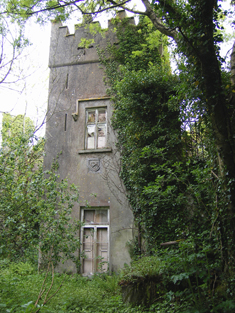
|
| Muckridge House | The Hobson family were resident at Muckridge from at least the mid 1770s. Wilson, writing in 1786, refers to it as the seat of Mr. Hobson. In 1814 Richard Fitzgerald is recorded as resident at Muckridge and in 1837 William Fitzgerald. At the time of Griffith's Valuation Samuel Le Hunte Hobson held the property in fee and the buildings were valued at £37. Still extant, well maintained and for sale at the beginning of 2010. |
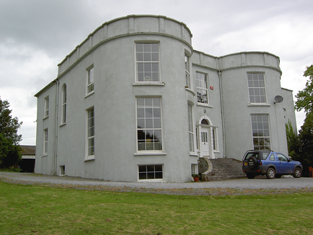
|
| Seafield | The home of Mr John Hudson in 1814 and of Thomas Seward in the early 1850s. Seward held the property from Lord Stuart de Decies and it was valued at £24. The National Inventory of Architectural Heritage suggests it was built in the latter decades of the 18th century. It has recently been under renovation. |
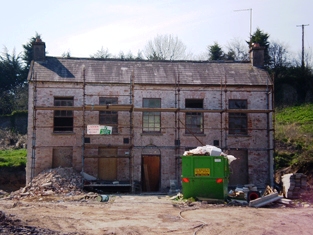
|
| Myrtle Grove | Myrtle Grove, a Tudor manor house, associated with Sir Walter Raleigh and the sixteenth-century poet, Edmund Spencer At the beginning of the 17th century it was sold to Richard Boyle, 1st Earl of Cork, and later became the property of the Hayman family, who owned it in the 18th and early 19th centuries. In 1837 Lewis writes that it was inhabited by Colonel Faunt. Later occupants include Joseph Wakefield Pim, Sir John Pope Hennessy and the Arbuthnot family. Now in private hands this house is open to the public on certain days in the year. |
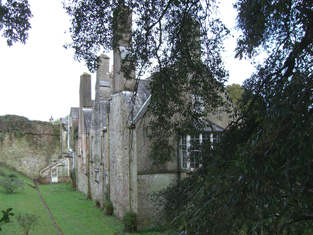
|
| D'Loughtane | The Ronayne family were resident at D'Loughtane for many centuries. It was lost to the family in the 17th century but recovered through marriage with a Bluett. In the eighteenth century Smith refers to it as "the pleasant seat of Mr. Ronayne". The original house was destroyed by fire and a new one built in the early 19th century. At the time of Griffith's Valuation, it was held in fe by Robert P. Ronayne and valued at £26. The sale rental of June 1851 states that it was erected at a cost of £3,500. Knight writes that it was sold in the Encumbered Estates Court in 1856 to Mr Samuel Allen who sold it later to John Pedder Furlong of Fermoy. Furlong sold the property to the Land Commission in 1910. The house has had a number of occupiers since then and is now owned by the Smiddy family. |
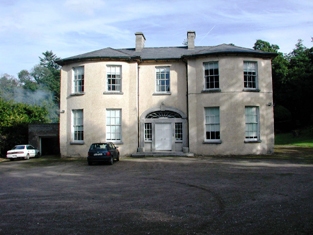
|
| Ardsallagh House | Mrs.Olivia Ronayne was leasing this property from the estate of Lord Stuart de Decies at the time of Griffith's Valuation, when it was valued at £10 10s. It is labelled Ardsallagh House on both the 6-inch and 25-inch Ordnance Survey maps. Extant buildings remain at the site. | |
| Laurentum | At the time of Griffith's Valuation, Richard Coughlan was leasing this property from the Villiers-Stuart estate, when it was valued at £11. It does not appear on the 6-inch Ordnance Survey map but is named as Laurentum on the later 25-inch map. There is still an extant house at the site. | |
| Clashmore | Clashmore was held in fee by the Earl of Huntingdon at the time of Griffith's Valuation, when it was valued at £34. The site marked on the 1st-edition Ordnance Survey map is not that recorded on the later 25-inch map. Smith refers to the earlier house as the seat of Mr. Power and Wilson refers to it as the seat of Richard Power in 1786. The Irish Tourist Authority Survey of the 1940s suggest the later house was never fully completed and by then had all but disappeared. Much of the extensive farmyard, however, is still extant and in use. |
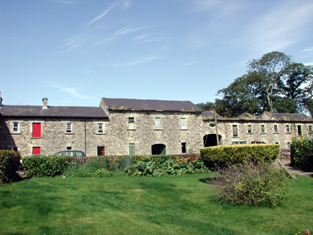
|
| Bayview (Clashmore) | Rev. Michael Purcell was leasing this property from Lord Decies estate in 1851 when it was valued at £12. There is still an extant house at this site. | |
| Rockview (Clashmore) | Leased by Richard Bayley from the Villiers-Stuart estate at the time of Griffith's Valuation, when it was valued at almost £7. It is labelled Rockview on both the 6-inch and 25-inch Ordnance Survey maps. There is still an extant house at the site. | |
| Glenlicky Mill | At the time of Griffith's Valuaton Rev. James Elliott was leasing this substantial property to Thomas Page, when it was valued at £44. It included a house and mill. Noted on the 25-inch Ordnance Survey Map of the later nineteenth century as Glenlicky Mill. The buildings are now ruinous. | |
| Lackendarra House | In 1851, Mrs. Eleanor Fitzgerald was leasing this property from Rev. James Elliott when it was valued at £11 5s. In 1894 it appears to have been occupied by a Russell family. | |
| Monatray | In 1851 Pierce S. Smith [Smyth), a minor, held Monatray in fee when it was valued at £35. In 2013 it was offered for sale. The sale details suggest it was built by Percy Smyth of Headborough as a summer residence in the 1830s. In the twentieth century it was occupied by a religious order and later a country house club before returning to private ownership in the 1980s. In recent years the house name is spelt Monatrae. In 2014 Monatrae was offered for sale. |
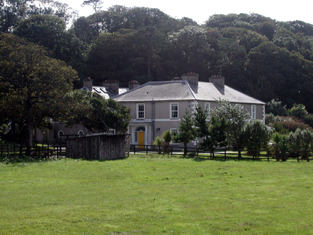
|
| Newtown House (Kinsalebeg) | Built after the first Ordnance Survey, Michael Kennedy was leasing this property from the Smyth estate in 1851 when it was valued at £13 10s. It is noted on the 25-inch Ordnance Survey Map as Newtown House. There is still an extant house at the site. | |
| Mayfield (Kinsalebeg) | In 1851 Thomas P. Carew was leasing this property from the Smyth estate when it was valued at over £20. A house labelled Mayfield appears at this location on the 1st edition Ordnance Survey map. In 1837 Lewis noted it as the seat of J. Gee. It is still extant and occupied. |
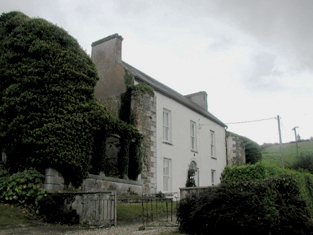
|
| Prospect Villa (Kinsalebeg) | Prospect Villa seems to have been built in the later nineteenth century, close by an earlier house known as Mayfield. A house at Prospect Hall is described by Smith as "a handsome seat with good improvements made by the late Stephen Bernard" In 1786 Wilson refers to "Prospect Hall" as the seat of Mr. "Barnet". There is still an extant building at the site. |
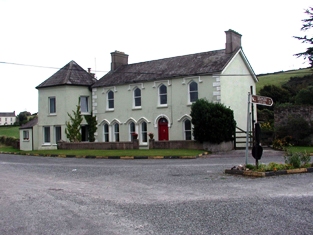
|
| Woodbine Hill | George Roche held this property from the Smyth estate in 1851 when it was valued at over £26. Local sources suggest it was built by him earlier in the nineteenth century. It is still extant and occupied. |
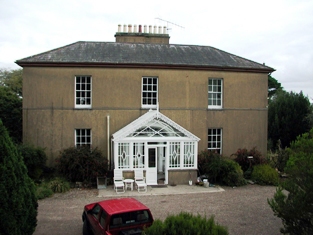
|
| Cappagh (Decies-within-Drum) | In 1851 James Gee was leasing this property from Lord Decies estate when it was valued at £19. This area has been subjected to severe coastal erosion and these buildings are no longer extant. | |
| Clashanahy | Sir Richard Musgrave held this property on lease from the Decies estate at the time of Griffith's Valuation, when it was valued at almost £18. There is still an extant property at this site. | |
| Lackandarra Lodge | At the time of Griffith's Valuation, Richard Chearnley held this property in fee when it was valued at almost £10. On the 25-inch Ordnance Survey Map of the 1890s it is labelled Lackandarra Lodge. A farm is still extant at the site. | |
| Lackandarra A | Mrs. Eleanor Power was leasing this property from the Chearnley estate at the time of Griffith's Valuation, when it was valued at £9. There are still buildings extant at the site. | |
| Clifton | Situated on the coast just south of Youghal, Clifton was occupied by Sir William Homan in 1837. Griffith's Valuation records John Keily junior as resident when the house was valued at £62. Buildings are still extant at the site. | |
| Green Park | Captain H. Parker of the Royal Navy was resident at Green Park in 1837. By the time of Griffith's Valuation William Carberry was the occupier holding the building valued at £38 from Pim Jackson. Extensive modern building has occurred in this area. |

